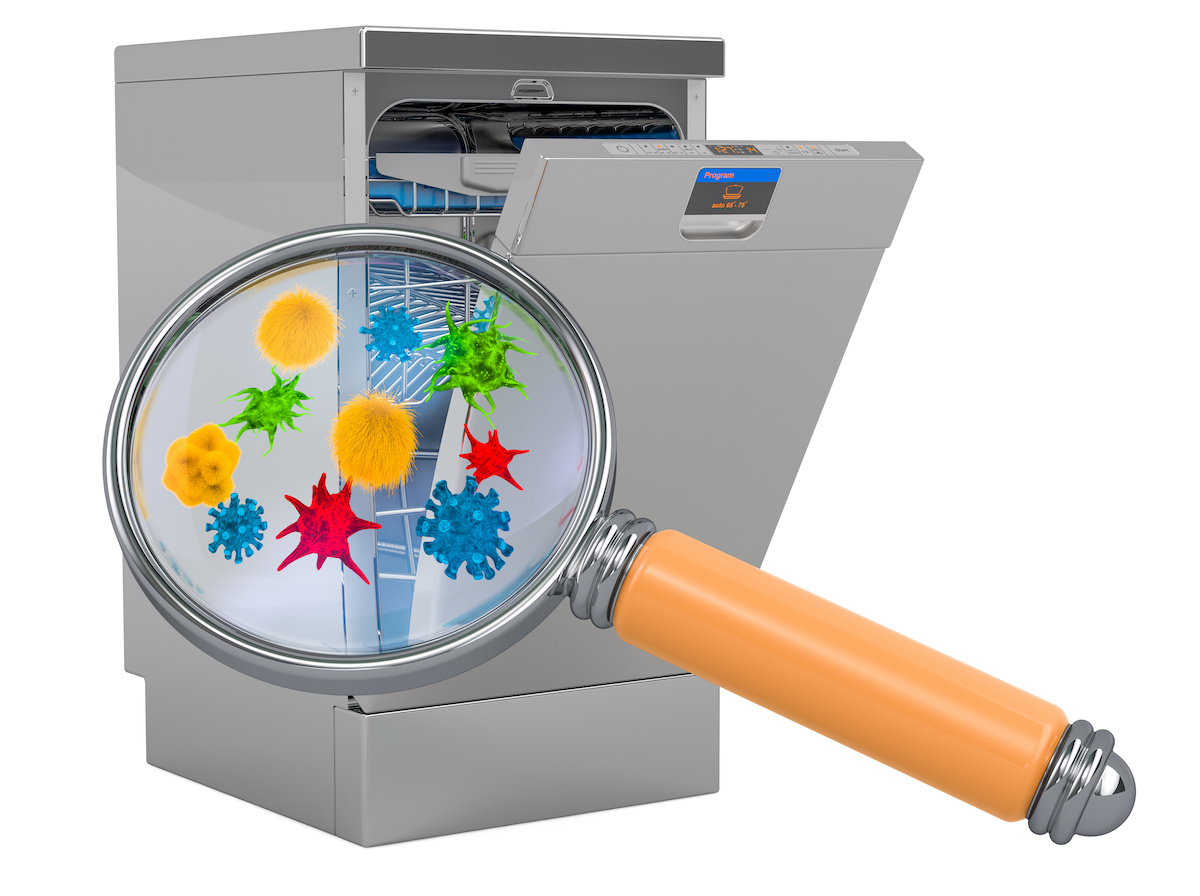Don’t Let Mould Take Over Your Dishwasher – Here’s How to Fight Back

Mould can be a problem anywhere in the home, but it can be especially troublesome in the kitchen. One of the most common places for mould growth is your dishwasher. Dishwashers are often moist and dark, which proves to be the perfect breeding ground for spores.
If you have noticed a musty odour and unpleasant odours coming from your dishwasher or black spots growing on your silverware and plates, you may have a mouldy appliance on your hands. However, there is no need to panic. There are multiple easy steps you can take to remove mould from your dishwasher and keep it clean.
The Best Way To Mitigate Mould from Dishwasher
To ensure you don’t have a mould problem and signs of mould, you’re better off taking steps to prevent it from happening in the first place.
Keep your dishwasher clean and dry
This means using a towel or cloth to absorb any moisture from inside the washer after each use and ensuring that the dishwasher door is always closed.
Use mould-repelling dishwasher tablets
These can help to keep mould at bay. You can also try spraying mould inhibitors into the dishwasher’s interior once a month or running your dishwasher with an empty cup of vinegar at regular intervals to help prevent mould growth.
Clean the filter regularly
The dishwasher filter can often be a mould hotbed, as rotting food that might get caught is prime real estate for mould spores. It is important to clean this component and replace the filter if necessary.
Sanitize the gasket regularly
The rubber seal inside a dishwasher door, known as the gasket, is the number one place mould likes to grow. Be sure to give this part a thorough scrubbing every couple of weeks.
If mould prevention efforts are ineffective, follow the steps below to give your dishwasher a thorough enough cleaning that guarantees the elimination of mould and mildew buildup.
How To Clean Your Dishwasher
Remove dishwasher parts
Remove all plates and silverware, as well as racks and stands. Wash everything with warm and soapy water, then set them out to dry.
Get a specialized mould cleaner
A commercial dishwasher cleaner would be ideal, but homemade cleaners do the job just as well. There are various homemade options if you cannot find any sort of commercial-grade cleaner.
- 2 cups water, ½ cup hydrogen peroxide, and ¼ cup lemon juice.
- 2 cups water, ¼ cup lemon juice, and ½ cup distilled white vinegar.
- 1 cup vinegar and 4 cups water.
- 1 cup bleach and 4 cups water. Note: we only recommend this option if the above three do not work.
Scrub the dishwasher
Apply your cleaner to mouldy areas, especially around rubber parts or tight spots where spores might be hiding. You can use a sponge, scrub brush, or an old toothbrush. Once you are sure everything has been thoroughly cleaned, rinse the dishwasher out with warm water.
Replace racks
Once you’ve done this, we recommend pouring two cups of vinegar into a dishwasher-safe container, placing it inside the dishwasher, and running a full hot water cycle. This is an extra step that can be taken to ensure every area of your dishwasher has been cleaned.
Deodorize using baking soda
Sprinkle some baking soda on the bottom of your dishwasher and run another full wash cycle to ensure any lasting mould spores are killed and the appliance is left smelling like new.
Call PuroClean For All of Your Mould Remediation Needs
PuroClean understands how frustrating it can be to deal with mould and mildew growth, especially in areas that aren’t easily accessible. As “The Paramedics of Property Damage(R),” we know exactly what needs to be done to ensure mould is completely removed from your home or property, and we are always available to help 24 hours a day, seven days a week. Contact us today to learn more about how we can help you with mould remediation in your home or business.